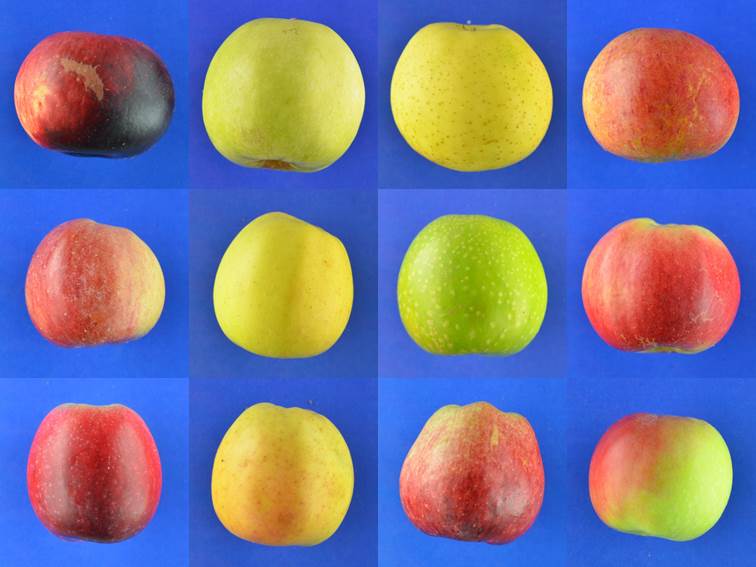The question at the heart of my PhD is a very practical one: ‘How can we use the appearance of apples as an authenticity tool for industrial purposes?’
To start with I focused on testing whether we could actually tell the cultivars apart based on detailed photographs. The good news was that for a limited set of retail samples this proved possible. However, this did nothing to explain why we could tell them apart, nor whether the success was due to chance, or intrinsic consistency of harvested apples.
Early in 2013 I decided to start investigating the actual process of shape development for the fruit of apple cultivars. The National Fruit Collection in Brogdale, Kent (managed by the University of Reading) was my principal sampling site since it hosts a very wide range of apple cultivars grown under standard conditions.
As it was my first large experiment I was nervous about collecting more samples than I could process so I focused on 13 cultivars. It quickly became apparent that 13 cultivars were more than enough to keep me busy for the whole growing season. It was during that season that there was an unexpected and quite damaging hail event. Luckily the most affected section of the orchard only had one of the cultivars I was studying. And then there were 12.
Analysis and findings from that experiment made me start 2014 with more questions than I had answered about shape character and development on apples. I designed a new experiment and a verification trial for the 2013 findings. As I was waiting for the new season to start I also sampled apples from supermarkets, which led to the often bemused expressions of checkout assistants. It is apparently unusual to buy 30 bags of apples in one go.
Having collected my samples through the course of the season (no hail this year!), I spent the run-up to Christmas analysing my data. I am now starting 2015 with the daunting task of writing up. After 3 years, 2,305 apples collected, 32 different cultivars and 14,960 pictures taken I think I will have plenty to write about.
This work has now been published in PLOS One.




Pingback: Nibbles: Kiwi breeding, Nagoya Protocol, ITPGRFA, Hablitzia, Eating insects, Patents, European forests, Native American foodways, Plant protein, Apples, Dog cartoon, Climate change & yields, Seed pix
Pingback: Nibbles: Kiwi breeding, Nagoya Protocol, ITPGRFA, Hablitzia, Eating insects, Patents, European forests, Native American foodways, Plant protein, Broken bread, Apples, Dog cartoon, Climate change & yields, Seed pix